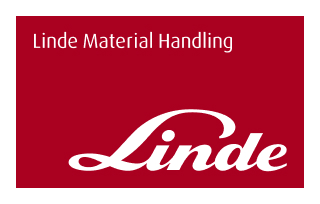Forklift tip overs are among the most dangerous incidents in material handling. Whether it’s a sideways or forward tip-over, knowing what to do in these situations can prevent serious injuries and even save lives. In this article, we’ll cover the common causes of forklift tip overs, how to avoid them, and what to do if your forklift tips over.
What Causes Forklift Tip Overs?
Forklifts tip over due to an imbalance in weight distribution, improper operation, or hazardous working conditions. This can happen in two main ways: sideways or forward tip overs. Understanding these causes is the first step in preventing accidents.
Common Causes of Sideways Forklift Tip Overs
Sideways tip overs often occur when a forklift loses stability due to improper weight distribution or sudden movements. Here are some of the main causes:
- Turning too quickly – Sharp or high-speed turns can shift the centre of gravity, causing the forklift to tip sideways.
- Uneven or sloped surfaces – Operating on ramps or uneven ground increases the risk of sideways tip overs.
- Overloading one side – If the load is not balanced correctly, one side may become too heavy, leading to instability.
- Driving with an elevated load – Keeping a load raised too high shifts the centre of gravity, making the forklift more prone to tipping.
Common Causes of Forward Forklift Tip Overs
Forward tip overs typically happen when the weight at the front of the forklift becomes too much to handle. Here’s why they occur:
- Overloading the forklift – Exceeding the rated capacity can make the forklift lurch forward.
- Sudden braking – Stopping too quickly with a heavy load can create forward momentum that tips the forklift forward.
- Incorrect load placement – Placing a load too far forward on the forks can make the forklift front-heavy.
- Driving too fast – Excessive speed can make it difficult to control the forklift, increasing the chances of tipping.
4 Safety Tips to Help Avoid Forklift Tip Overs
Preventing forklift tip overs starts with safe operating practices. Follow these four key safety tips:
- Wear Your Forklift Seat Belt – A forklift seat belt keeps the operator secure in case of a tip-over. Always buckle up before operating.
- Follow Load Capacity Guidelines – Never exceed the weight limits specified by the manufacturer. Check the load rating before lifting.
- Keep Loads Low While Driving – Always keep the forks as low as possible when moving, as this helps maintain stability.
- Drive Cautiously – Avoid sudden turns, braking, and excessive speed. Operate smoothly, especially on uneven surfaces.
4 Things to Do in the Event of a Forklift Tip Over
Even with proper precautions, forklift tip overs can still happen. If you find yourself in this situation, here’s what you should do:
- Stay Inside the Forklift – Do not try to jump out. Exiting during a tip-over increases the risk of being crushed.
- Hold On Tight – Grip the steering wheel firmly to keep yourself stable.
- Brace Yourself – Press your feet down, lean away from the direction of the tip, and keep your body inside the protective frame.
- Wait Until It Stops – Only exit the forklift once it has fully stopped and it is safe to do so.
Surviving a Forklift Tip-Over
Survival depends on staying inside the forklift and using your seat belt. Many fatalities occur when operators try to jump out and get trapped under the falling machine. The forklift’s overhead guard and protective frame are designed to shield the operator in case of a tip-over.
Final Thoughts
Forklift tip overs are serious incidents, but they can be prevented with proper training and safety measures. Always wear your forklift seat belt, operate within weight limits, and drive cautiously to reduce the risk. If a forklift tip over does occur, remember to stay inside, hold on, and brace yourself to stay safe.
By following these guidelines, you can ensure a safer working environment for yourself and your team.
Ready to do some serious lifting? Check out our line of forklifts at the link below.
OUR FORKLIFTS

